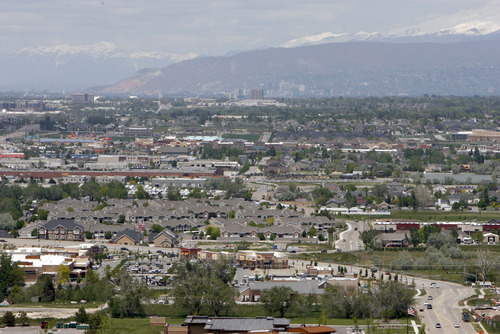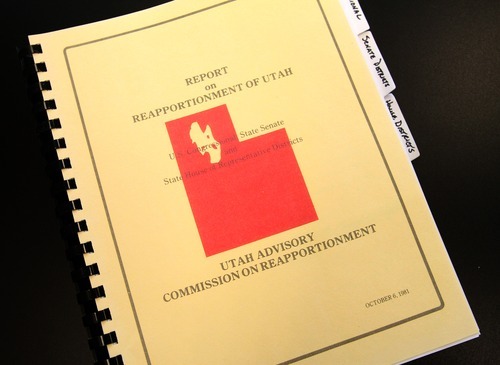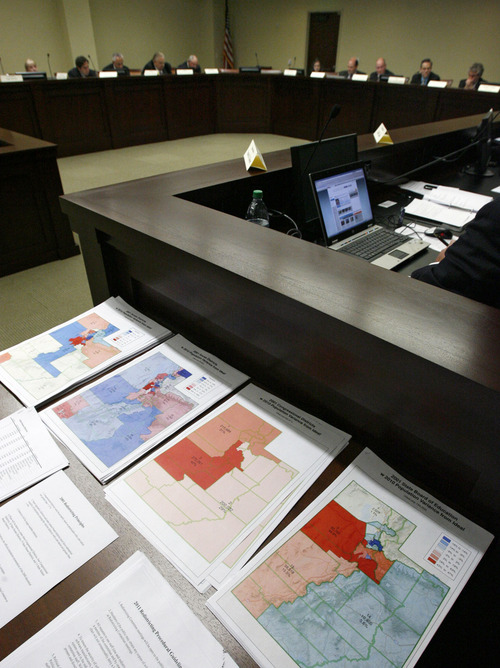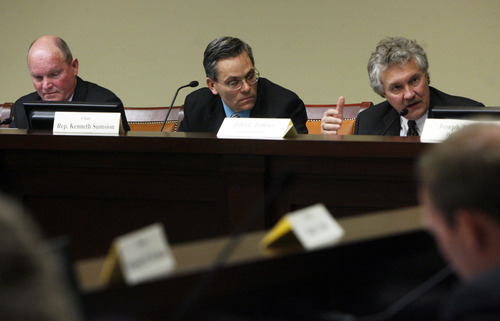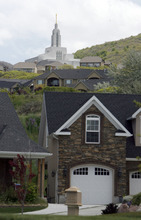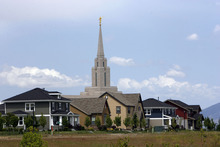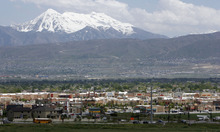This is an archived article that was published on sltrib.com in 2011, and information in the article may be outdated. It is provided only for personal research purposes and may not be reprinted.
Where once was farmland now sit fancy upscale homes. Lots of homes, which then attract new strip malls, gas stations and parks.
But don't forget that such growth naturally leads to one other outcome: increased political might.
The people living in the cities on both sides of the Salt Lake and Utah county divide have experienced a decade of remarkable population growth, and as state lawmakers redraw the political boundaries, they are also likely to see a few new state representatives and senators, too.
The politically sensitive redistricting process is under way, where a select group of state lawmakers uses the new 2010 Census figures to get the populations of everything from school board slots to the state's four U.S. House districts as equal as possible.
"The real goal is to have one person, one vote," said state Sen. Ben McAdams, D-Salt Lake City, a member of the 19-person Redistricting Committee. "To make sure every voter has an equal share of representation in the Legislature and Congress."
Right now, no voters have less say than the people living in places like Lehi, South Jordan, Eagle Mountain and Draper. Take state Sen. Howard Stephenson's 11th District as an example. He lives in Draper, and his district also spans part of northern Utah County. If the population growth were even, he should have 95,306 people living in his area. Right now Stephenson has almost 134,000, the second largest disparity among the 29 Senate seats behind only Sen. Mark Madsen's Lehi-based district. Contrast that with McAdams' 2nd District, which has about 83,000 people living in it.
Reduced to its simplest form, redistricting means that Stephenson and Madsen will see the areas they represent shrink, while McAdams' territory must grow to get as close as possible to that magic Senate district number of 95,306.
But redistricting is far from simple. The lawmakers will likely respond to such uneven population shifts with not only an eye toward natural political boundaries like city or county lines, but also political self-interest, protecting favored incumbents while pairing rivals (most likely Democrats in this overwhelmingly conservative state) in the same district.
The Legislature is expected to approve the new boundaries by the end of the year for use in the 2012 elections.
Rep. Todd Kiser, R-Sandy, says the shifting map will definitely result in some new lawmakers, and he should know. He says he's a House member now largely because of the redistricting process in 2000.
Kiser had great respect for his state representative at the time — John Swallow, who is now the chief deputy attorney general. Swallow was moved into another area during redistricting, leaving Kiser's district without an incumbent.
"I decided to run because it was an open seat," said Kiser, one of 19 new House members elected in 2002. "I think redistricting always creates change."
Kiser's district is something of an anomaly. Census figures show it is a mere 110 people above the state House district target population of 36,852, closer than any other House district. While people moved into Riverton, Bluffdale and South Jordan, a nearly identical number of people moved out of the Sandy portion of Kiser's district.
Still, he and other lawmakers noted a "ripple effect" where the changing boundaries of one district affect every other one as well, and he expects the area he represents to change accordingly.
"I expect every legislative district in Salt Lake County to change," he said.
That shift could leave fewer lawmakers in the north and east ends of Salt Lake County while drawing more to the west and south, where growth was strong.
Population shifts to the suburbs could also mean that the state's most populous county will have fewer lawmakers representing it.
Adam Brown, a Brigham Young University political scientist, has analyzed the census data for his site — utahdatapoints.com — and he believes Salt Lake County should have 28 House districts, not 31 as it has now, while Utah and Davis counties combined should pick up those three seats.
McAdams and Kiser say expected retirements in the House and Senate will act as a safety valve relieving pressure by allowing the committee to carve up the districts with vacancies, which include Senate President Michael Waddoups' Taylorsville seat or Rep. Carl Wimmer's district in Herriman. Waddoups has said he is not running for re-election, while Wimmer plans to run for a U.S. House seat.
Sen. Ralph Okerlund, co-chairman of the Redistricting Committee, says he's trying to avoid making any early determinations until the committee hears from interested Utahns first. But he called the imbalance of seats in south Salt Lake County "pretty striking."
Okerlund and the rest of the Redistricting Committee have embarked on a cross-state tour to gather information from the public on how they should redraw the political boundaries.
The 19-member Redistricting Committee will hit West Jordan on July 12, though the location has yet to be decided. Those interested in attending can check back at redistrictutah.com.


